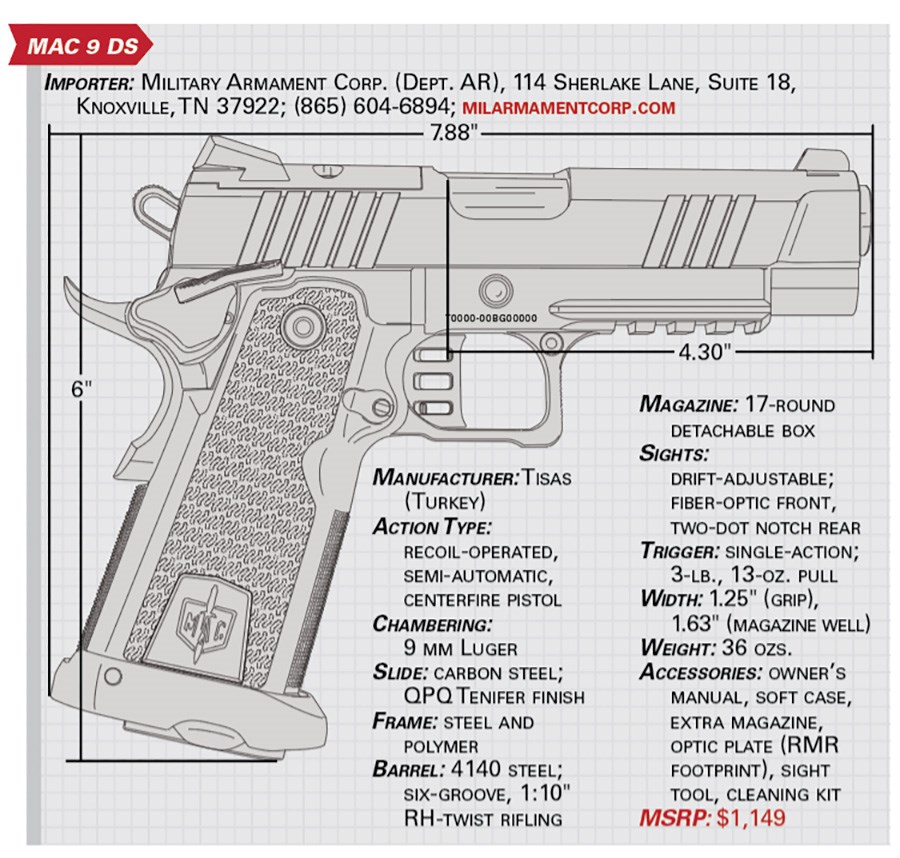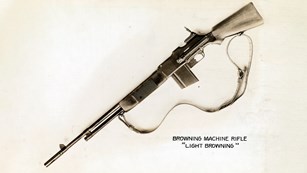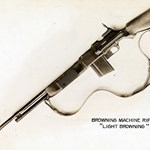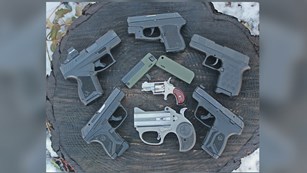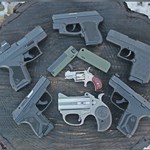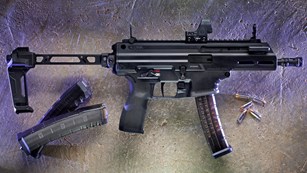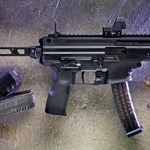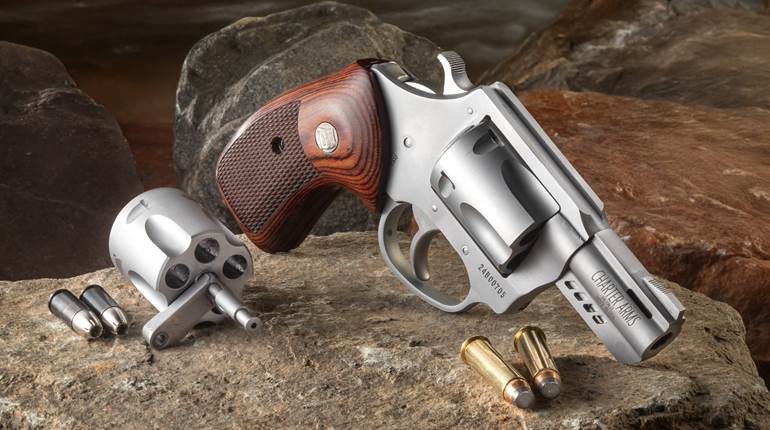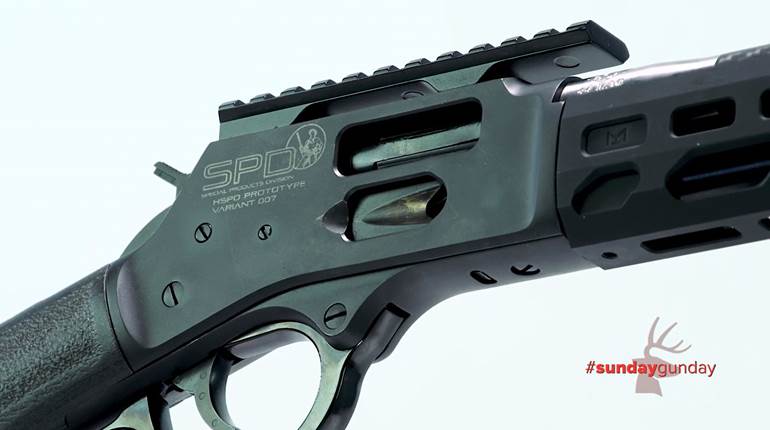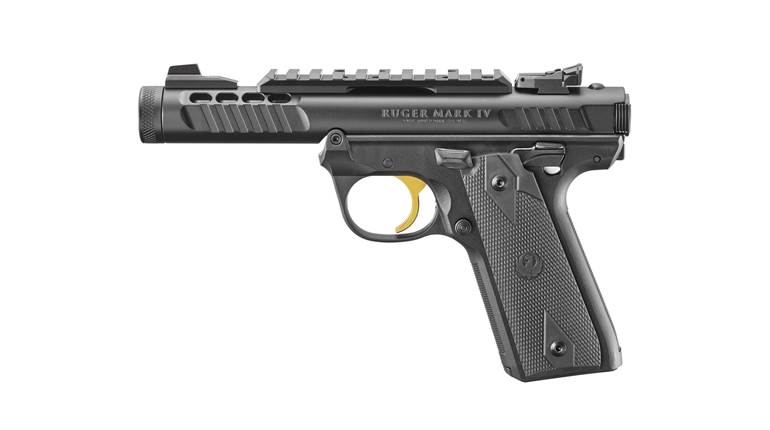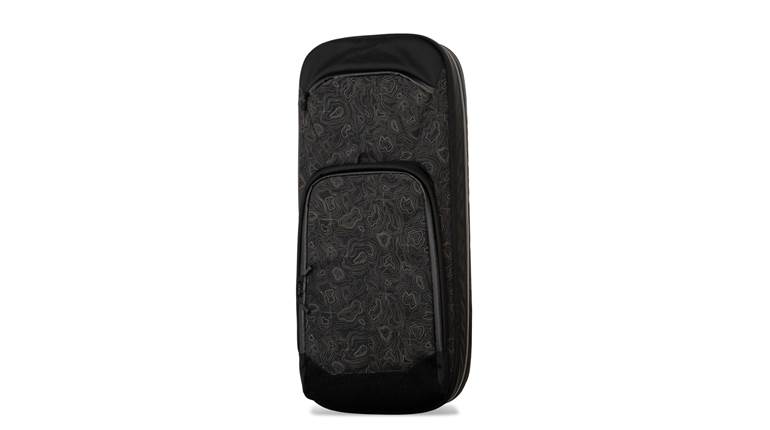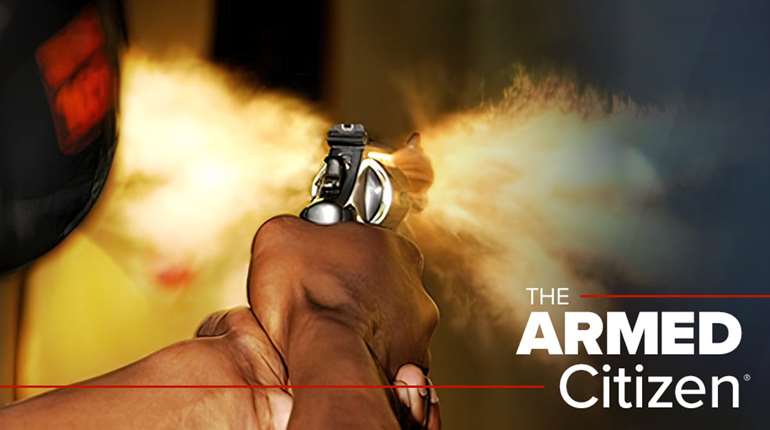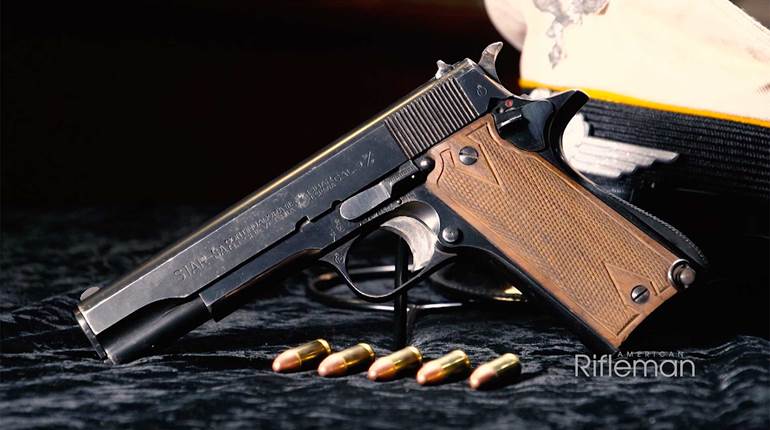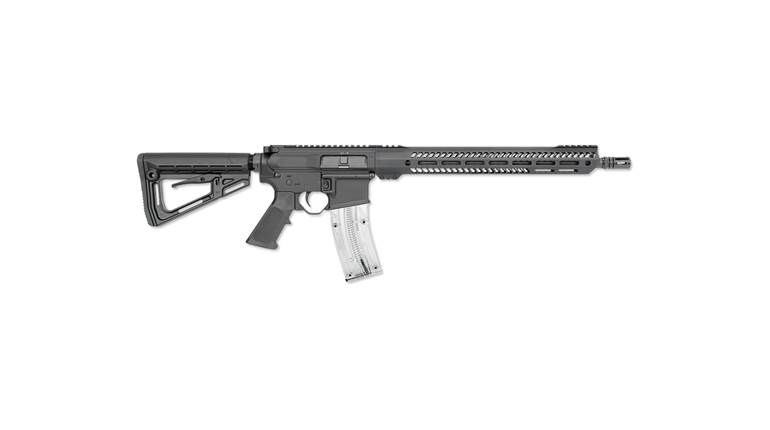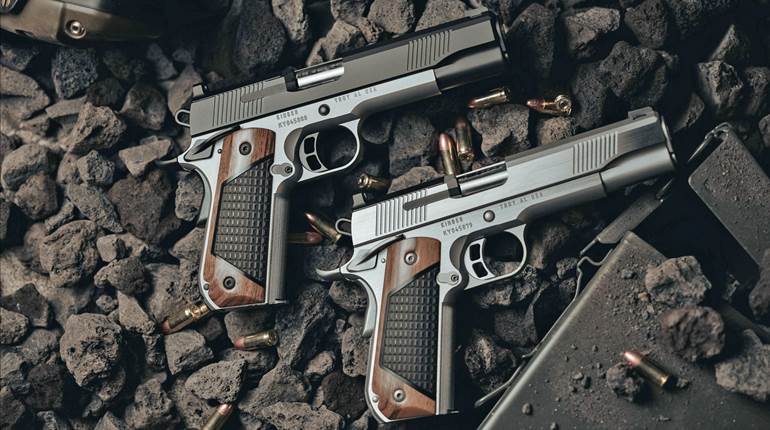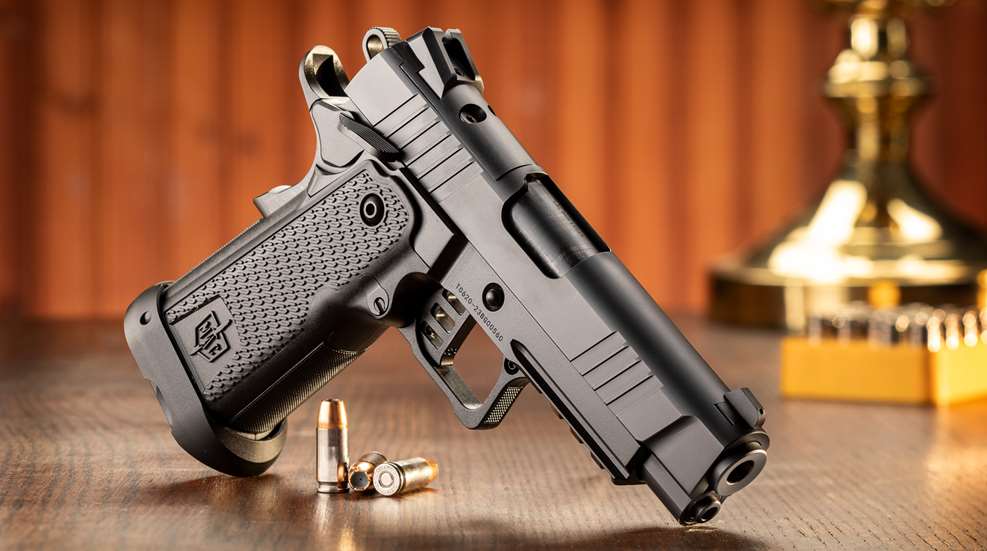
Located in Knoxville, Tenn., the new Military Armament Corp. (MAC) was launched at the Shooting, Hunting and Outdoor Trade (SHOT) Show in 2023 and boasted a sizable list of initial offerings, such as semi-automatic shotguns (MAC 1014, MAC 2 and MAC F12) in various configurations and the feature-filled MAC 1911 JSOC. Unwilling to rest on its laurels, though, MAC has further diversified its M1911 line with the subject of this review, the 9 DS.
Many supposed drawbacks of the M1911 design are addressed with the Turkish-made MAC 9 DS. Foremost is magazine capacity; chambered in 9 mm Luger and utilizing double-stack magazines, hence its designation, the modernized take on John M. Browning’s vaunted M1911 holds 18 rounds (17+1). Two 17-round magazines accompany the handgun.
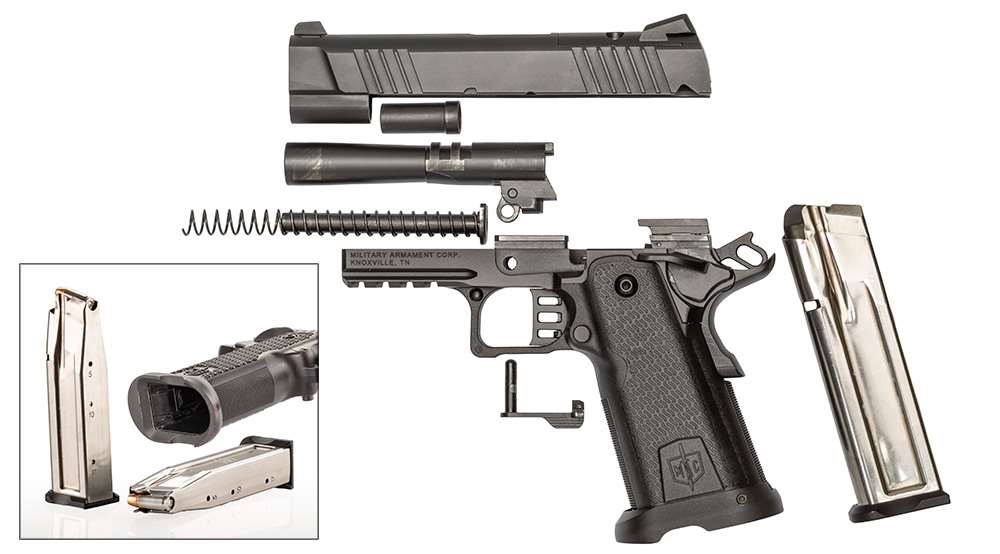
To accommodate the staggered-column, Check-Mate-manufactured magazines, the 9 DS’s polymer grip module incorporates the stocks, blending near-seamlessly with the carbon-steel frame. The 9 DS has an oversize magazine well to hasten reloads. Thanks to generous beveling of all sides, magazines glide home quickly and effortlessly, while cutouts grant unimpeded access should a magazine fail to fully release. The squarish trigger guard, which has a small swath of molded-in checkering, is part of the grip module. Similarly, there is integral checkering on the frontstrap and backstrap, as well as curvy lines sculpted on the sides, to aid purchase. Fans of the M1911 will find the fire controls to be familiar. The magazine-release button is situated rearward of the trigger, with the slide stop located directly above. The safety levers are the only bilateral controls on the 9 DS, and behind them is a beavertail grip safety.
As for the skeletonized aluminum trigger, the pre-production 9 DS we evaluated exhibited characteristics of a two-stage design; the final version, however, will have a single-stage trigger. On the sample 9 DS, the trigger pull was exceptionally smooth and broke at an average pull weight of 3 lbs., 13 ozs. Take-up and reset were both quite short.
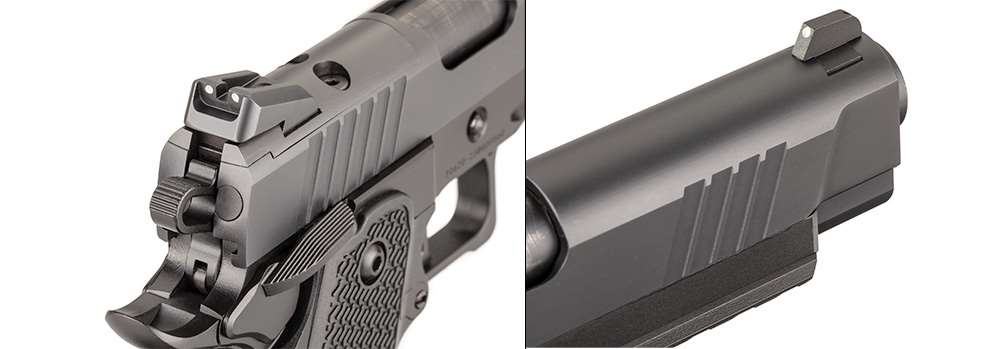
Noting the trend of handgunners equipping their pistols with a red-dot sight, the carbon-steel slide of the 9 DS is cut to accept the provided RMR-footprint plate; three additional plate options will be available for purchase. This plate is secured via two screws and also has a dovetailed, flat-faced, notch-rear sight, allowing the co-witnessing of the optic with the “irons.” For those who prefer iron sights, a rounded plate is provided with a dovetailed, dehorned, angled rear sight with a notch flanked by white dots. The front sight on our test gun was a ramp with a single white dot, although production guns will instead have a fiber-optic pipe. Serrations at the front and rear of the slide on both sides aid its manipulation. The frame, which includes a four-slot accessory rail integrated into the dustcover, is treated with a QPQ Tenifer finish, as is the slide.
Disassembling the bushingless pistol grants access to a guide rod with a single recoil spring, as well as the cold-hammer-forged 4140 steel barrel. Flaring to 0.695" near the muzzle, the heavy, 4.30"-long barrel has an integral feed ramp and ends with a target-type crown. The extractor and fixed ejector were absolutely reliable during testing. The firing pin is made from titanium.
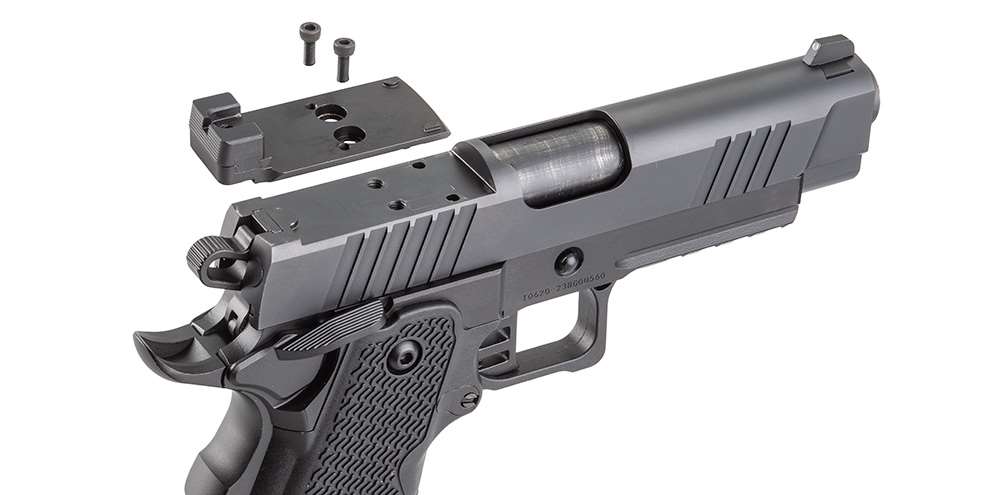
It must be stated that the sample sent to us for evaluation was a prototype and had been thoroughly used. In fact, the barrel’s finish was worn noticeably in places, the breechface displayed significant brass residue and the magazine well exhibited signs of the ammunition holders slamming home repeatedly. The exact round count was unknown, but suffice it to say, it was likely considerable.
We accuracy tested the +P-rated pistol at 25 yards from a simple Browning sandbag rest. Resisting the inclination to add an optic, we decided to evaluate it using the open sights. As for the 9 mm Luger ammunition used to test accuracy, we selected three “premium” loads, including a +P variant: Federal Personal Defense Punch 124-grain JHPs; Hornady Critical Duty 124-grain FlexLock +Ps; and Nosler Assured Stopping Power 115-grain JHPs. A mixture of remnant factory ammunition from previous tests, as well as handloads featuring 115- and 124-grain FMJ bullets, were added when function testing and plinking.
During accuracy testing, the standout proved to be Federal’s Punch; the average for five consecutive, five-shot groups measured a notable 1.94" and the smallest group was 1.50". Frankly, all groups were sufficiently sized for stopping a threat, punching cardboard (for score) or toppling distant steel, though they did impact slightly to the right and a hint low. Only one failure to feed was encountered, using the Nosler ASP. We attributed it to the magazine, and it couldn’t be replicated.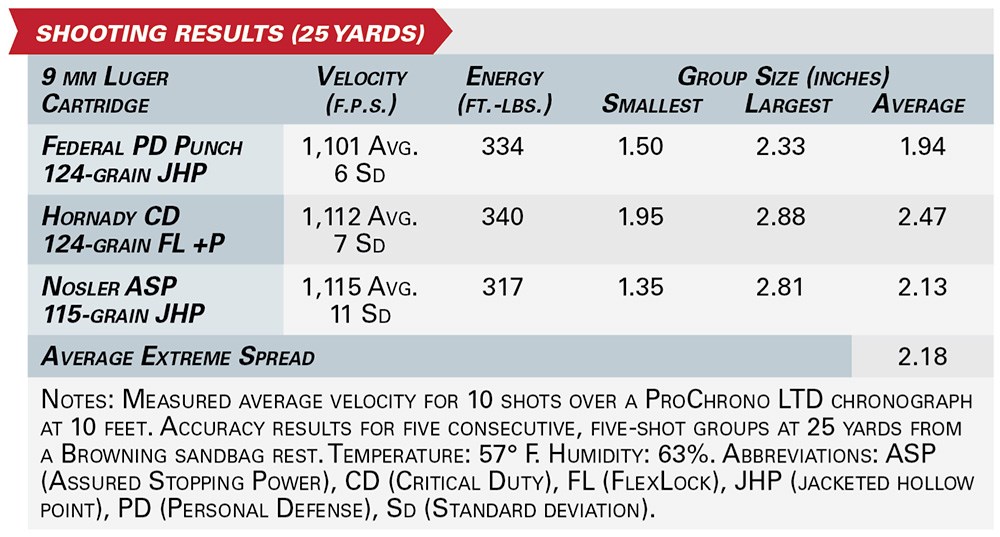
With accuracy testing completed, we then randomly loaded the gun’s magazines with the remaining 9 mm ammunition, and—regardless of order—the MAC 9 DS ran the loads without issue. The short trigger reset was helpful in performing quick follow-ups during rapid-fire drills. Additionally, we found the one-piece, hand-filling grip to be particularly comfortable, and even less-seasoned shooters who held the 9 DS appreciated it. Everyone prized the texturing applied to enhance purchase, and it made controlling the pistol a breeze. It’s a fun gun to shoot.
Lastly, although the enlarged magazine well increases the gun’s dimensions, thereby complicating transport (i.e. holstering to an extent), this drawback is more than offset by the additional speed afforded during magazine changes. Rapid insertion of a magazine was as foolproof as is possible.
Fans of Browning’s renowned M1911 design looking for enhanced capacity in an optics-ready, soft-shooting pistol will find it in the MAC 9 DS, all at a price that’s hard to beat.